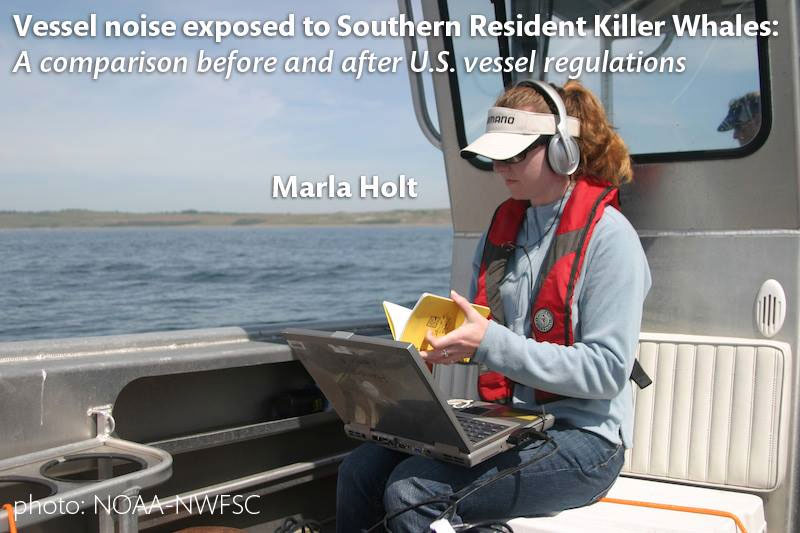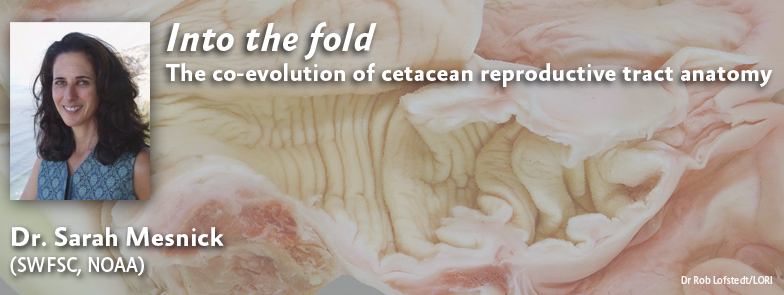2015-2016 Speaker Series
The Puget Sound Chapter of the American Cetacean Society would like to sincerely thank the following people for giving a presentation at one of our monthly Speaker Series meetings.
Click on any of the Abstract links for a summary and a brief bio about the talk Many abstracts also contain additional related resources.
Click on any of the +Abstract links for a summary and a brief bio about the talk.
Many abstracts also contain additional related resources.
15 June 2016 - Jim Waddell
Killer Whales, Salmon, Taxes, and LSR Dams ... Abstract
Jim Waddell will address the millions of taxpayer dollars being spent on four Lower Snake River dams with minimal benefits and about how the dams are hindering salmon and orca recovery in our region. Jim will explain why it makes sense to breach the dams now, what is standing in the way and how any of us can help! This topic is heating up at the moment in Washington DC and regionally in the Pacific Northwest. Learn why time is running out for salmon and orcas!
Jim Waddell is a civil engineer, retired from a 35 year public service career with the U.S. Army Corps of Engineers. In 1999, Jim became the Deputy District Engineer for Programs at the Walla Walla District at the time the Lower Snake Feasibility Study was into its 5th year of development.
18 May 2016 - Bonnie Gretz
Antarctic Adventure ... Abstract
Join us for a slide-show presentation of a grand adventure in the Antarctic, on an American Cetacean Society/Cheeseman's Ecology Safaris trip in March 2016. There were Type B Gerlache orcas, many beautiful and friendly humpbacks, thousands of penguins, spectacular birds, and amazing scenery.
Bonnie Gretz is a long-time (1994) member of ACS and has served as Conservation Chair on both the ACS National board and the Puget Sound Chapter board. She originally hails from Southern California but is now a "born-again" Northwesterner since 1998, living first in Portland then on Whidbey Island. She also volunteers with Orca Network, Sound Waters Stewards of Island County (Washington), and on board the whale watch boat, Mystic Sea, as a volunteer-naturalist. She has been learning about cetaceans for 22 years and is a confirmed "orca-holic."

20 April 2016 - Marla Holt, NWFSC
Vessel noise exposed to Southern Resident killer whales: A comparison before and after U.S. vessel regulations ... Abstract
Marla Holt is a Research Wildlife Biologist for the Marine Mammal and Seabird Ecology Team at the NOAA Fisheries Northwest Fisheries Science Center. She joined the NWFSC as a National Research Council (NRC) Postdoctoral Associate starting in October of 2006 to investigate the effects of vessel noise on the acoustic signals of Southern Resident killer whales.
Marla's current research focuses on marine mammal acoustics including the effects of noise on Southern Resident killer whales, the cost of sound production in odontocetes, and passive acoustic monitoring. Marla received her Ph.D. from the University of California, Santa Cruz where she conducted both lab and field investigations on pinniped acoustics.

16 March 2016 - Jessica Hale, School of Aquatic and Fishery Sciences, University of Washington
Washington Sea Otters: A Success Story ... Abstract
Jessie Hale will present information on sea otter biology, the history of sea otters in Washington State and their current status, and her graduate work on sea otters in Washington State. As a graduate student and NOAA Dr. Nancy Foster scholar at the School of Aquatic and Fishery Sciences at the University of Washington, Jessie is conducting research on sea otter population dynamics and foraging ecology.
Jessie is currently a graduate student and NOAA Dr. Nancy Foster of Aquatic and Fishery Sciences at the University of Washington. She is currently studying the Washington sea otter population and what they are eating. Jessie blogs and tweets about science at halejessie.wordpress.com and as @HaleJessie when she’s not watching sea otters on the coast (and sometimes during)!
17 February 2016 - Joe Olson, Cetrestec, Inc.
Cetacean Sound Recording and Analysis Techniques Basics Abstract
Watching whales and dolphins can be very exciting. When we are also able to listen to these intriguing animals, their world opens to us so much more. Joe will present several examples of cetacean vocalizations, as well as other underwater sounds. He will then introduce various methods used to record the sounds, and ways to visualize and interpret them. The audience will also get a chance to record and analyze their own cetacean sounds.
Joe Olson has been recording dolphins and whales for more than 25 years. He builds hydrophones for a living and is the founder and past president of the Puget Sound Chapter of the American Cetacean Society.
20 January 2016 - Jared Towers, DFO, MERS, GSGGSSI
Cetaceans and Fisheries: Interactions and Impacts ... Abstract
Jared Towers, from British Columbia, Canada works as a cetacean research technician in the North Pacific for Fisheries and Oceans Canada (DFO), the Marine Education and Research Society (MERS), and in the South Atlantic for the Government of South Georgia and South Sandwich Islands (GSGGSSI). His research mainly focuses on the ecology of killer whale populations in both regions but also includes various studies on the abundance, movements and behaviors of other large whale species. Many of these studies are aimed at understanding the short and long-term impacts of commercial fisheries on cetacean populations.
18 November 2015 - Dr. Sarah Mesnick, SWFSC, NOAA
Into the fold: The co-evolution of cetacean reproductive tract anatomy Abstract
Several cetaceans possess unusual and complex vaginal folds, or pseudo-cervices, which are infoldings of the vaginal wall caudal to the os (true) cervix which form a spermathecal recess or recesses. Little is known about these structures; the literature is old, scattered and incomplete. It is not known whether they are present in many or all species or how variable their form is within and among species. Their function is also unknown. The folds have been hypothesized to have evolved as adaptations to mating in aquatic environments, e.g., to prevent incursion of seawater or the loss of semen, to stimulate ejaculation, and to facilitate parturition. More recently, we have proposed that sperm competition may play a role in the evolution of these structures. I will discuss efforts to further our understanding of variation in female reproductive tract anatomy with a goal of ascertaining functionality through a combination of morphological and phylogenetic approaches.
Sarah Mesnick leads communication and external affairs for the Southwest Fisheries Science Center (SWFSC) NOAA Fisheries, is an ecologist in the SWFSC's Marine Mammal and Turtle Division and is a co-founder of the Center for Marine Biodiversity and Conservation at Scripps Institution of Oceanography, University of California San Diego. Her research focuses on the behavioral and molecular ecology of marine vertebrates. The main goal of these studies is to provide a behavioral framework within which to investigate population identity, population trends, and fishery interactions in cetaceans. Sarah has worked in the Gulf of California since 1986 and been involved in vaquita conservation for many years. Currently she is linking in the culinary community to conserve this critically endangered species. She has helped orchestrate efforts to connect fishers with chefs, restaurants and distributors in the borderlands region. She likes best to be at sea or on oceanic islands, surrounded by wild animals.

21 October 2015 - Dr. Jim Sumich, OSU Fisheries and Wildlife Courtesy Faculty
North Pacific gray whale populations: The eastern/western paradox Abstract

Gray whales are one of the most observed and best studied whales along the West Coast. They are legally protected under several statutes as two separate populations; a large eastern population of about 20,000 whales and a critically endangered western population of less than 150. Jim will describe some exciting current research that is helping to clarify the evolving status and related management issues of these populations.
Jim currently resides in Corvallis, OR, where he has taught marine mammal courses at OSU’s Hatfield Marine Science Center. He has conducted research on gray whales from Baja California to British Columbia and has just published a new book — E. robustus: The Biology and Human History of Gray Whales, available for purchase and signing — which addresses this new research and everything else you ever wanted to know about gray whales. He also the author of a best-selling textbook on marine biology (now in its 10th edition) and co-author of the recently released 3rd edition of Marine Mammals: Evolutionary Biology with Annalisa Berta and Kit Kovacs.
16 September 2015 - Uko Gorter, ACS/PS President
Marine Mammals of the Puget Sound ... Abstract
Uko will give a broad overview of the whales, dolphins, and porpoises (Cetacea), seals and sea lions (Pinnipeds), and otters (Mustelids) of the inland waters of Washington State and Southern British Columbia, known as the Salish Sea. We'll take a close look at the history of exploitation (whaling & sealing), explore pioneering and ongoing research efforts; and highlight the current threats and conservation issues surrounding these magnificent aquatic mammals.
Uko will bring a variety of marine mammal artifacts like baleen, skulls, and pelts; to enhance the experience.

